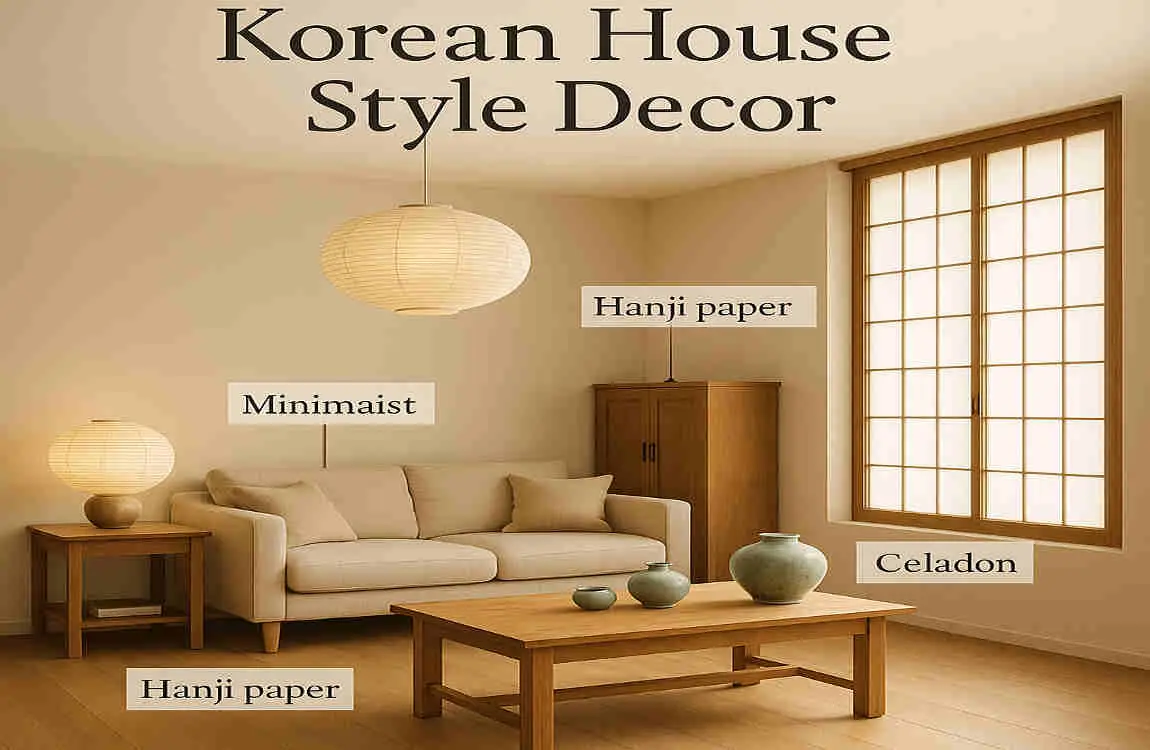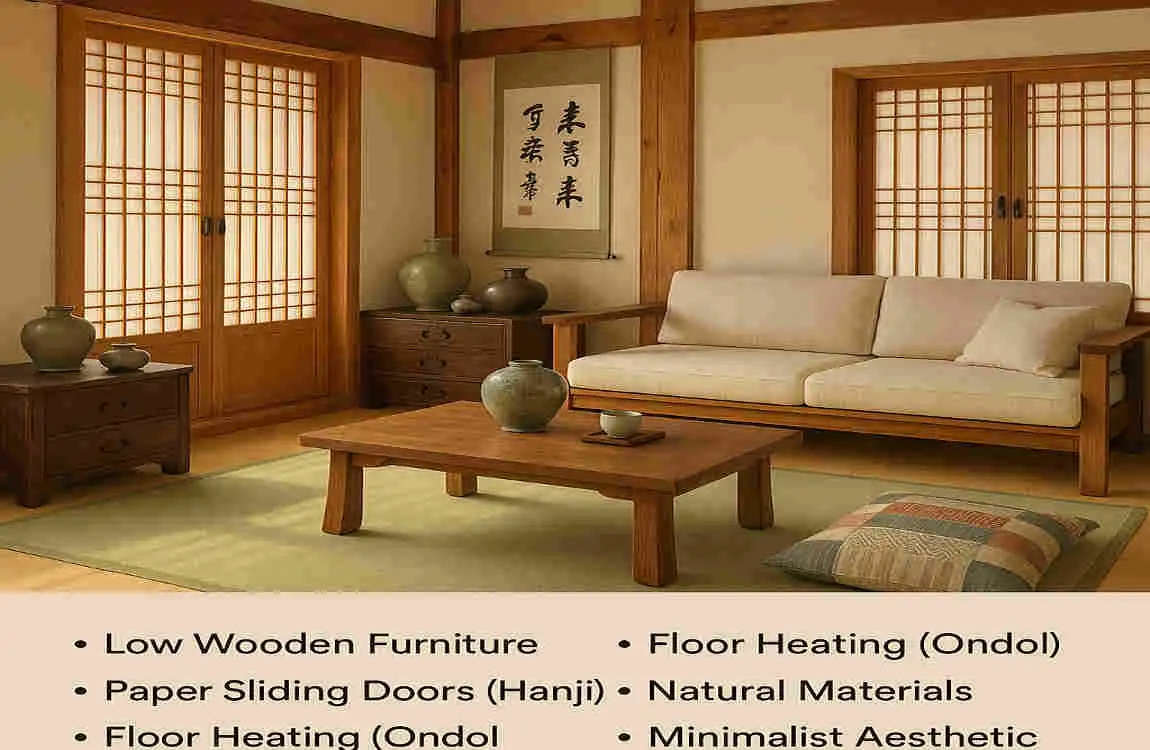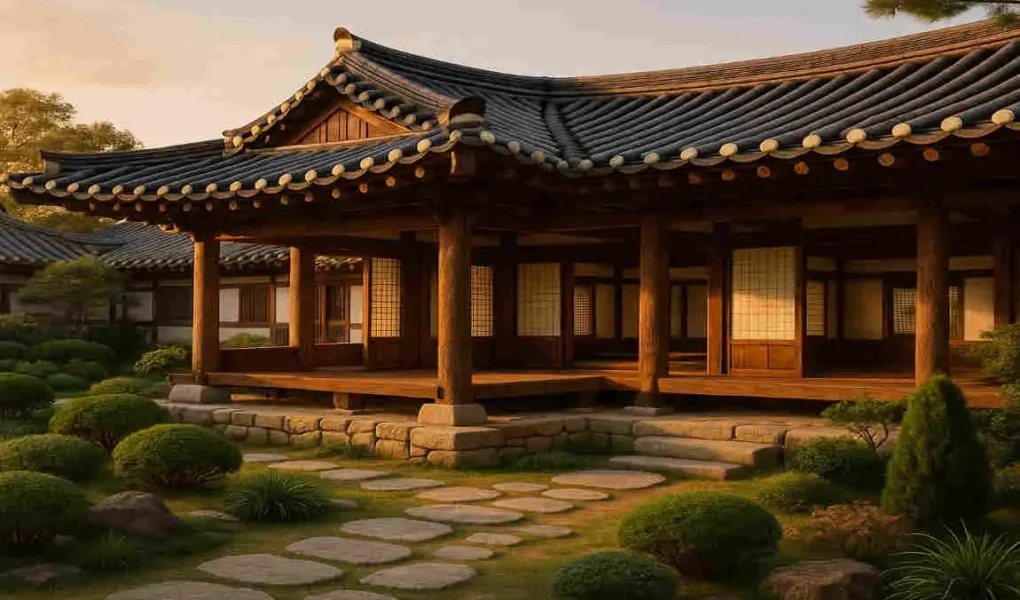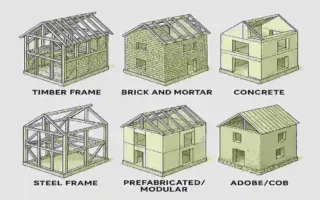Hey there! If you’ve ever been captivated by the serene, clutter-free spaces you see in Korean dramas or on social media, you’re not alone. The Korean house style has taken the world by storm, blending simplicity with a deep connection to nature. It’s all about creating a home that feels peaceful, balanced, and oh-so-inviting. Whether you’re a fan of minimalism or just looking to refresh your living space, this style might be exactly what you need.
We’ll explore the cultural roots of this design, break down its core principles, and give you actionable tips to apply them. By the end, you’ll have all the tools to create a home that reflects the beauty of Korean interior design. So, grab a cozy drink, settle in, and let’s embark on this journey together.
Understanding the Essence of Korean House Style

What Exactly Is Korean House Style?
Let’s start with the basics. Korean house style is a design philosophy rooted in Korean culture, combining traditional elements with modern simplicity. It’s not just about how a space looks—it’s about how it feels. This style draws heavily from the idea of living in harmony with nature and embracing a clutter-free, balanced lifestyle.
Historically, Korean homes, known as hanok, were designed with natural surroundings in mind. They often featured open courtyards, wooden structures, and a deep respect for the environment. Today, while modern Korean homes have evolved, they still uphold the core values of peace and simplicity.
The Core Principles: Minimalism and Harmony
At the heart of Korean decor are a few key ideas: minimalism, balance, harmony, and functionality. Every item in a Korean-inspired space serves a purpose—there’s no room for unnecessary clutter. The goal is to create a home that feels like a sanctuary, where you can unwind and recharge.
Balance is another big player. Korean design often emphasizes symmetry and proportion, ensuring that no single element dominates the space. Harmony comes through in the way spaces connect with nature—think large windows, natural materials, and earthy tones.
Traditional Meets Modern in Korean Homes
One of the most distinctive aspects of Korean house style is its ability to blend old and new elements. Traditional elements, such as ondol (underfloor heating) and low furniture, are paired with modern minimalism to create spaces that feel both timeless and fresh. In the past, Koreans would sit and sleep on the floor, which influenced the use of low tables and cushions. Even today, this layout creates a grounded, intimate vibe.
Modern Korean homes might not have ondol heating everywhere, but they often mimic the concept with sleek, low-profile furniture. It’s all about maintaining functionality while preserving cultural roots. Isn’t it amazing how design can tell a story about a way of life?
Reflecting Korean Values and Lifestyle
Finally, let’s discuss how Korean interior design reflects the values of Korean culture. There’s a deep focus on family, community, and mindfulness. Homes are designed as spaces for connection—think cozy, open areas where everyone can gather. There’s also a respect for simplicity, reflecting a lifestyle that prioritizes what truly matters.
Have you ever noticed how calm you feel in a tidy, nature-inspired space? That’s the magic of Korean style. It’s not just decor; it’s a way of living. As we move through this guide, keep these principles in mind—they’ll be the foundation of your transformation.
Step 1: Embrace Minimalism and Declutter Your Space
Why Minimalism Matters in Korean House Style
You may also read (choosing the right bolts for your home restoration project).
Let’s kick things off with the cornerstone of Korean house style: minimalism. If there’s one thing you take away from this guide, it’s that less is more. Korean homes are all about keeping things simple and intentional. A cluttered space can feel chaotic, while a minimalist one brings a sense of peace.
So, why is minimalism so important? It’s not just about aesthetics—it’s about creating mental clarity. A tidy home helps you focus on what’s important, whether that’s relaxing after a long day or spending time with loved ones. Ready to start?
Start with a Good Declutter
First things first: let’s declutter. Grab a box or bag and go through your space. Ask yourself, “Do I really need this?” If the answer is no, it’s time to let it go. Keep only the items that bring you joy or serve a purpose. Think of this as a fresh start for your home.
In Korean decor, every object has meaning. You won’t find random knick-knacks lying around. So, be ruthless—donate, sell, or recycle anything that doesn’t fit into your vision of a serene space.
Choose Simple, Functional Furniture
Next, let’s talk furniture. In a minimalist Korean home, furniture is clean-lined and practical. Avoid bulky, ornate pieces that take up too much visual space. Instead, opt for sleek designs that blend into the background.
Look for items that serve dual purposes. A coffee table with hidden storage or a bed frame with built-in drawers can help you keep things tidy. The goal is to create a space that feels open and airy, not crowded.
Examples of Multi-Purpose Furniture
Here are a few ideas for multi-purpose furniture inspired by Korean homes:
- Low Folding Tables: Perfect for dining or working, and easy to store away.
- Stackable Stools: Ideal for guests, they can be tucked under a table when not in use.
These pieces save space and keep your home looking neat. Additionally, they evoke the understated style of traditional Korean furniture.
Creating Calmness Through Spaciousness
Once you’ve decluttered and chosen the right furniture, you’ll notice something amazing: your space feels bigger. That’s the beauty of minimalism. By removing excess stuff, you’re giving your home room to breathe—and giving yourself room to relax.
Take a moment to walk around your decluttered space. Doesn’t it feel lighter already? That’s the first step to achieving Korean house style. Let’s build on this foundation as we move to the next step.
Step 2: Use Natural Materials and Earthy Textures
Why Natural Materials Are Key in Korean Decor
Now that your space is decluttered, let’s bring in the warmth of nature. One of the defining features of Korean house style is the use of natural materials. Think wood, stone, and paper—these elements create a grounded, cozy atmosphere that’s hard to beat.
In Korean culture, there’s a deep respect for the environment, which is reflected in their interiors. Using materials straight from nature helps blur the line between indoors and outdoors, making your home feel like an extension of the world outside.
Opt for Wooden Flooring and Furniture
Start with the basics: flooring and furniture. Wooden floors are a staple in Korean interior design. They add warmth and a natural vibe to any room. If you can’t install real wood, look for high-quality laminate with a natural grain.
For furniture, choose pieces with natural finishes. A simple wooden dining table or a bamboo chair can instantly elevate your space. Avoid glossy or overly processed materials—they can feel cold and out of place in a Korean-inspired home.
Incorporate Stone and Paper Elements
Don’t stop at wood. Stone accents, like a granite countertop or a small stone vase, can add an earthy touch. In traditional Korean homes, paper was often used for windows and dividers (think hanji paper screens). You can mimic this with paper lanterns or lightweight room dividers for a subtle nod to tradition.
These materials aren’t just pretty—they’re tactile. Running your hand over a rough stone surface or seeing light filter through paper adds a sensory depth to your home. Isn’t that a lovely thought?
Use Natural Textiles for Softness
Let’s not forget textiles. In a minimalist Korean home, curtains, cushions, and rugs are often crafted from natural fabrics such as cotton, linen, or wool. These materials feel soft and inviting, balancing out the hardness of wood and stone.
Choose neutral tones for larger pieces, such as curtains, and then add texture with woven rugs or knitted throws. These little details make your space feel lived-in and warm.
Bring in Indoor Plants
Lastly, let’s talk greenery. Indoor plants are a must for Korean decor. They clean the air, add a pop of life, and reinforce that connection to nature. Opt for low-maintenance plants like pothos or snake plants if you’re not a green thumb.
Place them in simple ceramic pots and scatter them around your space. A small plant on a windowsill or a larger one in a corner can make a big difference. How do you feel about adding a touch of green to your home?
Step 3: Adopt a Muted and Soothing Color Palette

The Power of Neutrals in Korean House Style
Color plays a huge role in setting the mood of a space, and in Korean house style, it’s all about calm and serenity. The typical color palette includes whites, beiges, soft grays, and muted pastels. These shades create a backdrop that feels peaceful and uncluttered.
Why neutrals? They reflect light beautifully, making your space feel brighter and more open. Plus, they’re timeless—you won’t get tired of them after a few months.
Add Subtle Accents for Interest
While neutrals are the base, you can add a touch of personality with subtle accents. Consider soft blues, pale greens, or a muted mustard yellow for pillows, artwork, or small decorative items. These pops of color act as focal points without overwhelming the space.
The trick is balance. Stick to one or two accent colors and use them sparingly. This keeps your home feeling cohesive and in line with Korean interior design principles.
Color Psychology and Calmness
Ever wonder why certain colors make you feel a certain way? That’s color psychology at work. In Korean decor, muted tones are chosen because they promote relaxation. Whites and beiges evoke a sense of cleanliness and purity, while soft greens and blues evoke a natural feel, helping you unwind.
When selecting colors, consider how you want to feel in your space. If you’re aiming for tranquility (and in Korean style, you probably are), stick to these soothing hues.
Practical Tips for Choosing Colors
Ready to paint or decorate? Start with a neutral base for walls—think off-white or light beige. For furniture, go for similar tones or natural wood finishes. Then, layer in your accents with textiles or small decor pieces.
Don’t be afraid to test swatches before making a commitment. Paint a small patch on your wall and see how it looks at different times of day. Your space should feel like a retreat, so take your time to get it right.
Step 4: Incorporate Traditional Korean Furnishings and Layout
The Charm of Low Furniture in Korean Homes
Let’s dive into the furniture that defines Korean house style. Traditional Korean homes often feature low furniture, such as tables and seating, due to the ondol floor heating system. This underfloor heating made sitting on the floor comfortable, shaping the way furniture was designed.
Even if you don’t have ondol flooring, you can embrace this look with low coffee tables, floor cushions, and futon-style beds. It creates a grounded, intimate feel that’s perfect for family gatherings.
Key Pieces to Include
Here are a couple of traditional pieces to consider:
- Low tables are great for dining or working, often paired with floor cushions.
- Storage Chests: Beautiful and functional, these can hold blankets or other items while adding a cultural touch.
These pieces keep your space open and uncluttered while paying homage to Korean design.
Layouts That Encourage Connection
In Korean decor, layouts are all about fostering togetherness. Arrange your furniture to create cozy, communal areas. Place a low table in the center of your living room, surrounded by cushions, to invite conversation and connection.
Avoid blocking windows or natural light—Korean homes often prioritize views of the outdoors. Position the seating to face a garden or a large window, if possible. How would this setup work in your space?
Blending Traditional and Modern
You don’t have to go fully traditional. Mix in modern elements for a contemporary take on Korean house style. A sleek, low-profile sofa can pair beautifully with a traditional wooden chest. The key is balance—keep things simple and intentional.
Look for furniture with clean lines and natural finishes to tie everything together. This way, your home feels both modern and rooted in Korean heritage.
Step 5: Utilize Soft, Diffused Lighting
Why Soft Lighting Is Essential
You may also read (what are the different types of home construction).
Lighting can make or break the mood of a room, and in Korean house style, it’s all about creating a sense of softness. Harsh, bright lights are a no-go. Instead, aim for warm, diffused lighting that mimics the glow of natural sunlight.
This style of lighting creates a cozy, welcoming atmosphere, perfect for unwinding after a long day. It also highlights the natural materials in your space, like wood and stone, without overpowering them.
Tools for Creating Ambiance
So, how do you achieve this look? Start with paper lanterns or fabric lampshades—they soften the light and add a traditional Korean touch. Sheer curtains are another great option; they filter sunlight during the day for a gentle glow.
For evening lighting, use warm-toned bulbs in table lamps or floor lamps to create a cozy atmosphere. Avoid overhead fluorescents—they’re too stark for a minimalist Korean home. Instead, layer your lighting with multiple small sources.
Positioning for Maximum Effect
Think about where to place your lights. Position lamps near seating areas to create cozy nooks. If you have natural wood or stone elements, aim a soft light toward them to show off their texture.
Take a look around your space. Where could a warm lamp or lantern make a difference? Play around with placement until your room feels just right.
Step 6: Add Artistic and Cultural Touches
Celebrate Korean Heritage with Art
Now, let’s add some personality to your space with art and cultural elements. In Korean house style, decor is minimal but meaningful. Traditional art forms, such as calligraphy, ink paintings, or hanji paper crafts, can bring a piece of Korean heritage into your home.
Hang a simple ink painting on a neutral wall for a striking focal point. Or, display a small piece of calligraphy on a shelf. These touches add depth without cluttering your space.
Use Motifs in Textiles and Accessories
You can also incorporate Korean culture through the use of patterns and motifs. Look for textiles with subtle designs inspired by nature, such as floral or wave patterns. A cushion or throw with these elements can tie your room together.
Keep it simple, though. Choose one or two pieces with patterns and let the rest of your decor stay neutral. This balance is crucial to maintaining the serene ambiance of Korean decor.
Keep It Minimal and Intentional
Remember, less is more. Avoid overloading your space with cultural items—pick a few that resonate with you. Maybe it’s a ceramic vase or a woven mat. Whatever you choose, ensure it complements your minimalist design seamlessly.
What kind of cultural touch speaks to you? Consider how you can incorporate Korean-style elements while maintaining your space’s unique character.
Bonus Tips for Korean House Style Decor
Maximize Small Spaces with Modular Furniture
Living in a small space? No problem. Korean house style is perfect for compact homes because it prioritizes versatility. Utilize modular furniture—such as stackable shelves or foldable tables—to maximize your space.
Create Restful Bedrooms
For bedrooms, focus on simplicity. A low bed frame, neutral bedding, and minimal decor create a restful retreat. Add a small plant or a soft lamp for a touch of warmth.
Smart Storage Solutions
Korean homes often utilize clever storage solutions to maintain tidiness. Look for furniture with hidden compartments or use decorative boxes to keep things organized. A clutter-free space is a peaceful space.
Connect with Nature
Finally, bring the outdoors in. If you have windows, keep them unobstructed to enjoy natural views. Even a small balcony garden can enhance the nature-inspired vibe of Korean interior design.
Which of these tips will you try first? Small changes can make a big impact, so don’t hesitate to start with just one.
You may also read (reviving the past a beginners guide to flipping abandoned homes).




